October 13, 2023 | 10:41
Science
Education
Research
Studying Cosmic Rays using Ultra-High Energy Gamma Radiation. International conference at YSU
The international conference "Studying Cosmic Rays using Ultra High Energy Gamma Radiation" was held in the meeting hall of the YSU Academic Council, during which leading scientists from 12 countries discussed the modern studies of the field.
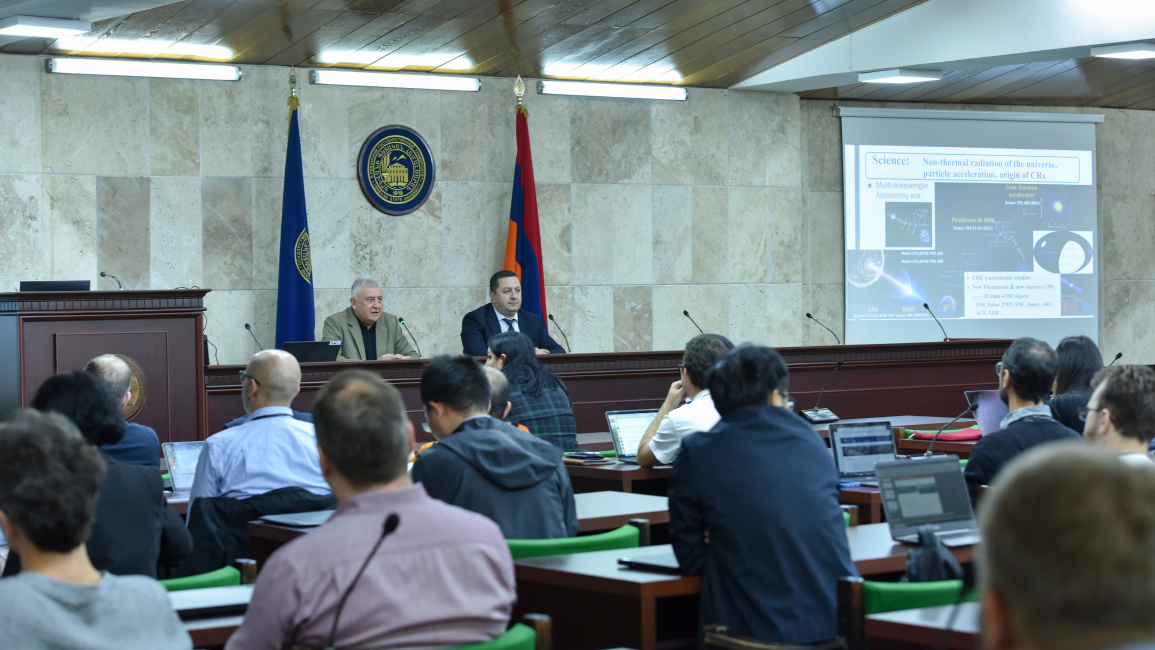
In the 40 reports presented, astrophysicists addressed the range of ultra-high-energy gamma rays, aspects of particle acceleration, and the generation of cosmic rays.
YSU rector Hovhannes Hovhannisyan gave welcoming remarks, thanking the organizers of the event and all the participants. The Rector of YSU stated that the presence and contributions of the participants of the conference will leave a lasting impact on Yerevan State University and in the field of cosmic ray research.
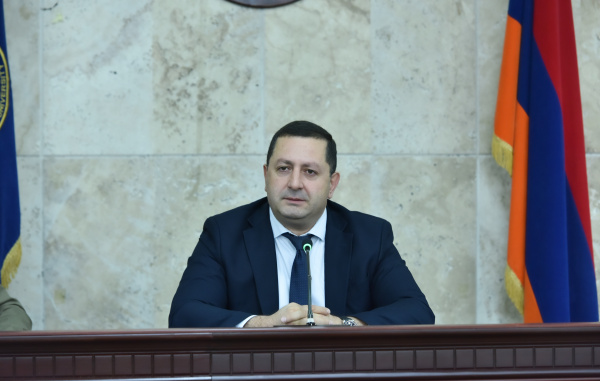
"Yerevan State University has a rich history of academic excellence, scientific research, and international cooperation. We are honored to host this landmark event on campus, bringing together brilliant minds from around the world to discuss one of the most exciting discoveries in astrophysics in recent years: the origins of multiple sources of ultra-high energy gamma rays. By holding this event, YSU not only reaffirms its commitment to developing science and research but also emphasizes the potential of international cooperation, as the exchange of ideas and data is important for the solution of scientific novelties and current issues," YSU rector emphasized.
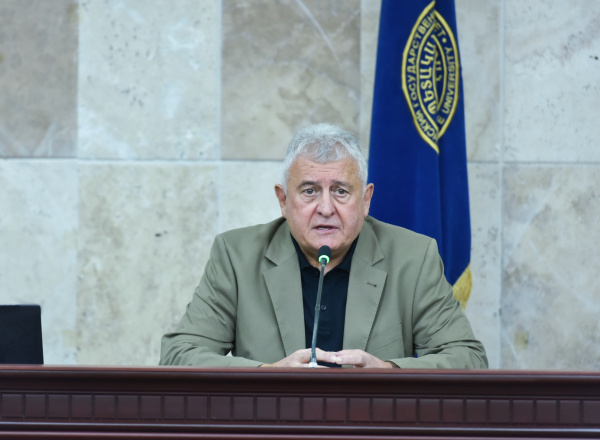
The co-organizer of the event held for the first time in Armenia, chief researcher of the YSU Physics Research Institute, foreign member of the National Academy of Sciences, and Professor of the Dublin Leading Research Institute, Felix Aharonyan, emphasized the importance of holding such discussions and noted that in recent years, great changes and discoveries have been made in the field, which should be presented. That became the main motive for organizing the conference.
"One of the latest achievements is, for example, the LHAASO device created by Chinese scientists, which enables the recording of gamma rays. Before the creation of the detector, it seemed impossible for gamma rays to reach us, but the device proves the opposite," noted F. Aharonyan.
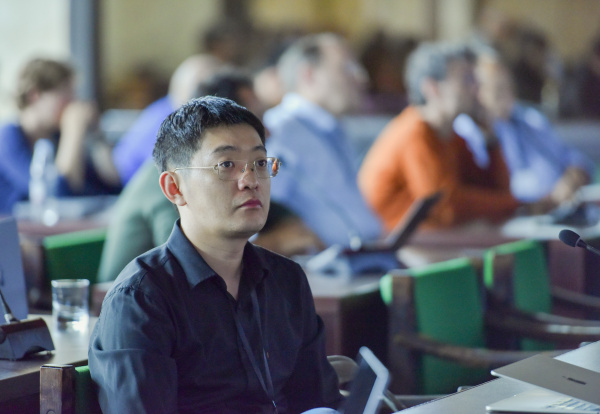
Professor Ruizi Yang from the Institute of High Energy Physics of the Chinese Academy of Sciences presented the functions of the aforementioned detector at the conference.
"LHAASO is the first observatory to be able to accurately measure the entire afterglow process, which includes the entire phase of the teraelectronvolt gamma-ray flux, from ascent to decay," Ruizi Yang explained.
The astrophysicist told us that in October 2022, for the first time, these photons reached the field of view of LHAASO, where more than 60,000 gamma ray photons were collected.
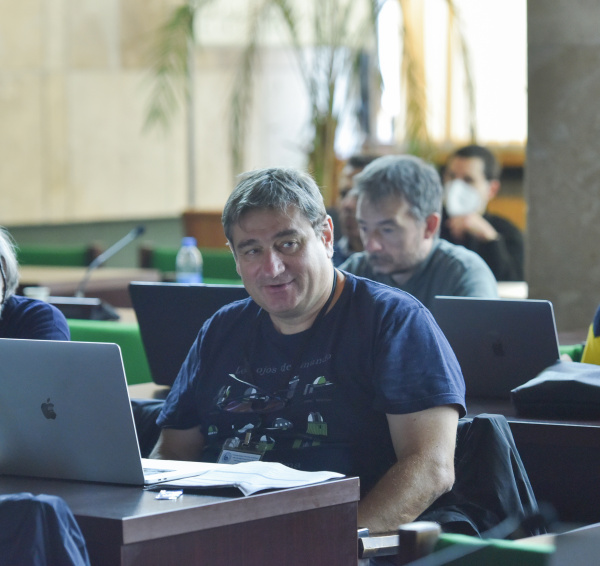
Scientific secretary of the Italian National Institute of Astrophysics (INAF), and the co-organizer of the conference Giovanni Pareschi emphasized the implementation of the new ASTRI project of Cherenkov telescopes in Tenerife (Canary Islands). The scientist stated that it will be of great importance in proving the decades-old theory that cosmic rays originate from the remnants of supernovae.
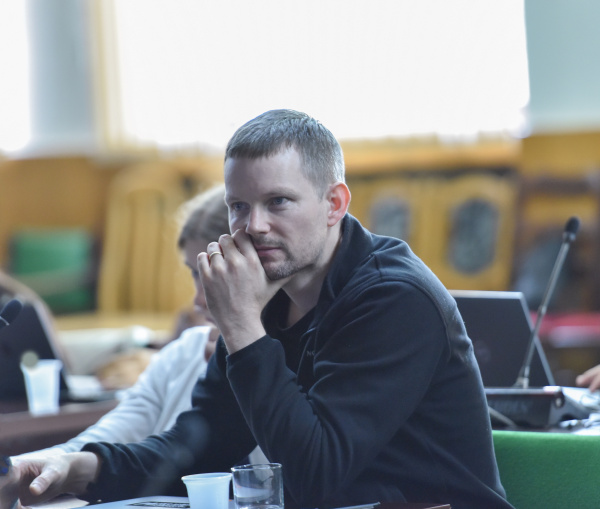
Head of the astrophysical plasma theory group at the German Max Planck Institute for Nuclear Physics, and the co-organizer of the conference Brian Revill, referring to the studies he conducted during the creation of LHAASO, noted, "In my research, I've focused a lot on the origin of cosmic rays, to find out where they come from and what the sources are."
It should be noted that the conference was organized by the joint efforts of the Research Institute of Physics of YSU, the Max Planck Institute of Nuclear Physics of Germany, the National Institute of Astrophysics of Italy, and the Institute of High Energy Physics of the Chinese Academy of Sciences.













